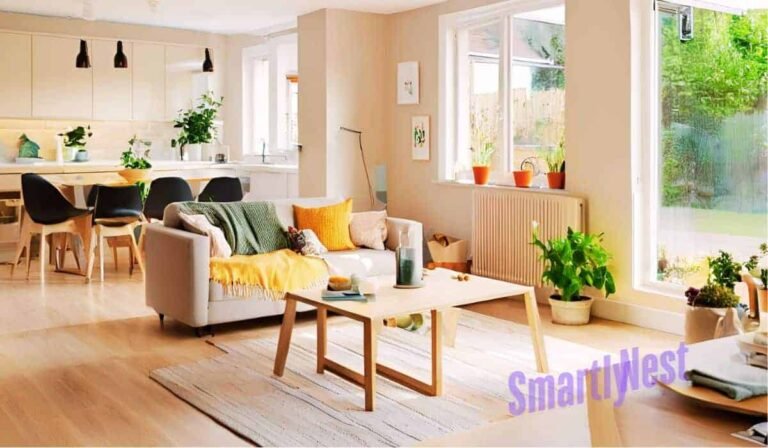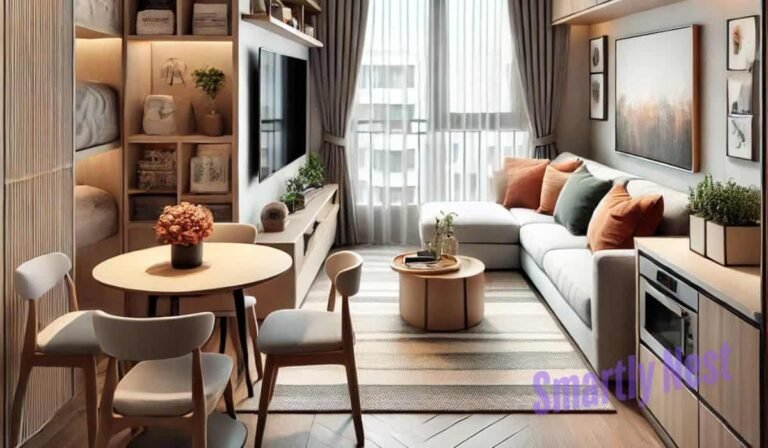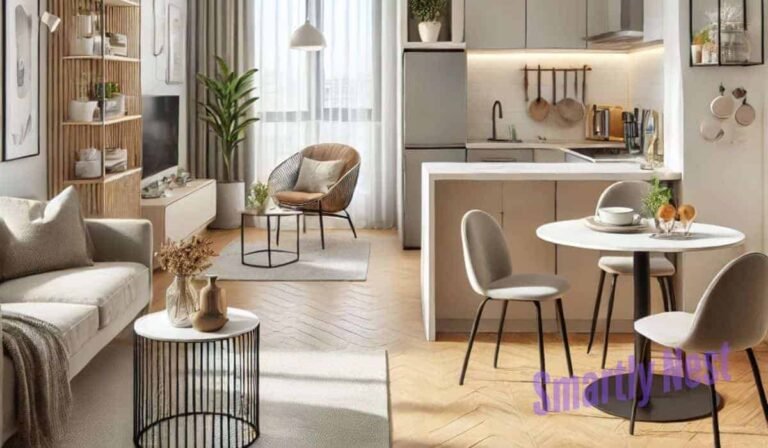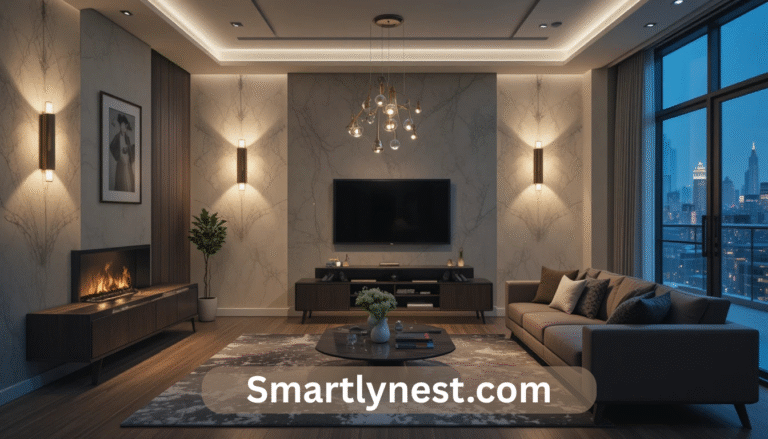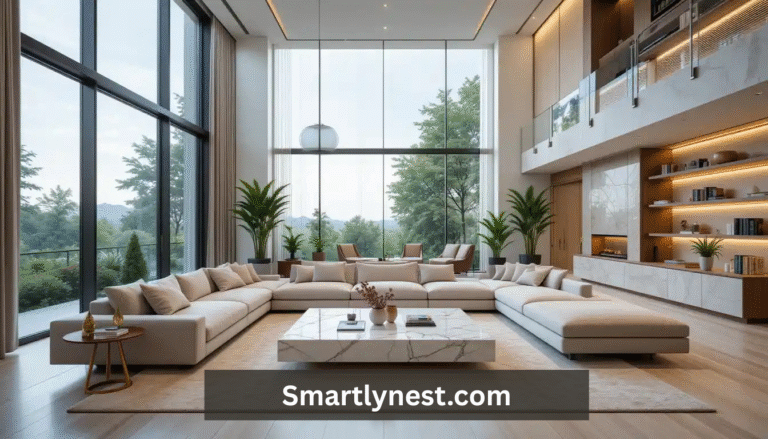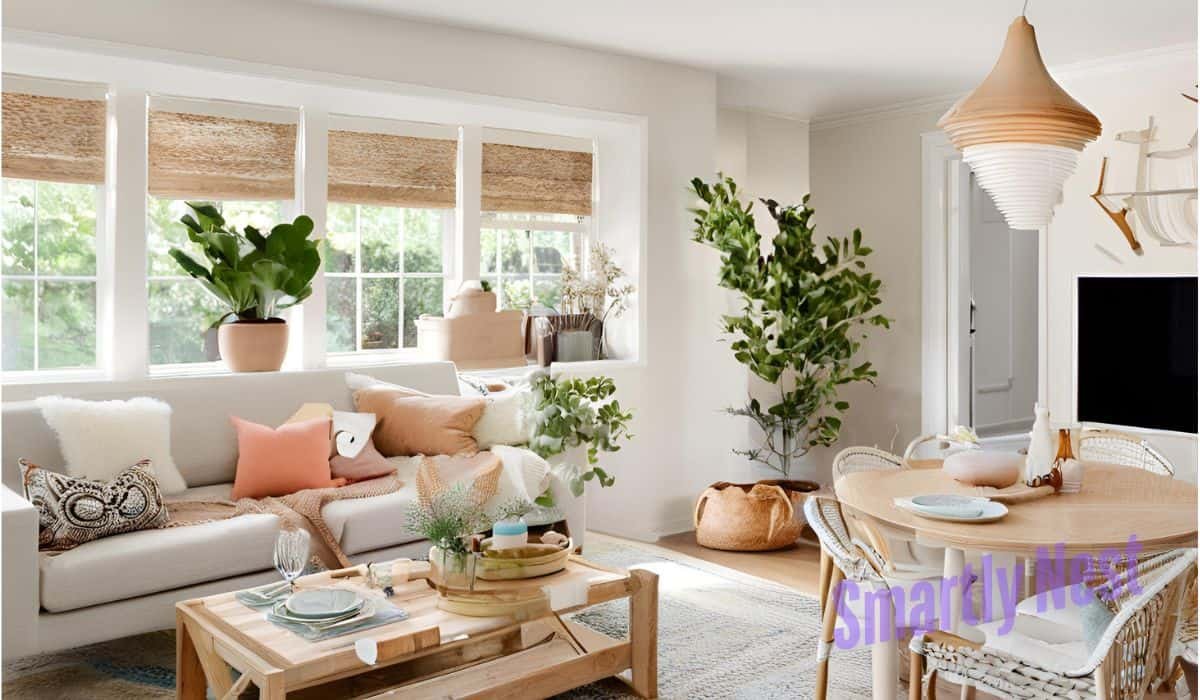
Combining your living and dining areas into one unified space offers an opportunity to create a more open, inviting, and functional home. With homes becoming smaller and more multifunctional, especially in urban areas, this design trend is not only practical but also stylish. It allows for more flexible use of space, greater social interaction, and an enhanced sense of flow.
The challenge lies in designing a space that balances the needs of both the living and dining areas, ensuring that each function is respected without compromising on style. In this article, we will explore 21 different approaches to creating a living room-dining room combo that is both aesthetically pleasing and practical.
Understanding the Concept of Living Room-Dining Room Combos
A living room-dining room combo typically refers to a single space that serves as both the living and dining area. In modern homes, especially those with open-floor plans, it’s common to see these two spaces merged to maximize space, enhance movement, and create a more open atmosphere.
Historically, homes had distinct rooms for each function, but today’s design trend is all about openness and flow. Open-plan living is now a standard in many new homes, providing better natural light and eliminating the barriers that divide social areas. Combining the living room and dining room into one space creates a versatile environment that adapts to multiple needs.
Benefits of Combining Living and Dining Spaces
When merging your living and dining areas, there are several benefits to consider:
1. Enhanced Flow and Connectivity
An open layout fosters a seamless transition between areas. Without walls or barriers, the space feels larger and more connected, making the overall flow of the home feel effortless.
2. Increased Natural Light
The absence of walls allows natural light to filter through the space more effectively. This can make even the smallest areas feel brighter and more spacious.
3. Flexibility in Functionality
A combined living and dining room is inherently more adaptable. The space can be reconfigured to meet different needs—whether you’re hosting a dinner party, working from home, or simply lounging with family.
4. Cost-Effective Design
By reducing the number of walls and doors, you can cut down on construction or renovation costs. A combined space is not only functional but can also be more budget-friendly.
Key Design Principles for a Cohesive Space
To create a living room-dining room combo that feels balanced, you need to consider several key design principles. Here’s what to focus on:
Zoning
Use furniture arrangement, rugs, or even lighting to subtly divide the space into distinct zones. For example, place the dining table in one area and the couch in another, while ensuring that each area flows naturally into the other.
Color Palette
A cohesive color palette ties the entire space together. Whether you opt for neutrals, bold hues, or a combination of both, the key is to maintain harmony and avoid clashing colors.
Lighting
Layered lighting is essential. Ambient lighting provides overall illumination, task lighting focuses on specific areas (like the dining table), and accent lighting highlights artwork or architectural features.
Furniture Selection
The furniture in each zone should complement each other in terms of scale, color, and material. Opt for pieces that work well together to create a balanced look.
Storage Solutions
In a combined space, storage is crucial. Use clever storage options, such as multi-functional furniture or built-in shelving, to keep the area organized and clutter-free.
21 Inspiring Living Room-Dining Room Combos
1. Open-Concept Elegance
An open-concept design is the epitome of modern living. Neutral colors like whites, beiges, and soft greys dominate the space, with sleek furniture that doesn’t overpower the design. Incorporating minimalist décor and large windows allows natural light to flood the space, making it feel airy and expansive.
2. Scandinavian Minimalism
The Scandinavian style is known for its simplicity and functionality. Light woods, clean lines, and a muted color palette create a serene atmosphere. In a combined living and dining room, minimalistic furniture and soft textiles, such as wool throws and linen curtains, help maintain a clean, uncluttered look.
3. Industrial Chic
Industrial design brings a raw, urban vibe to the home. Exposed brick walls, steel beams, and wooden accents create a sense of character. Mixing vintage-style furniture with modern touches, such as a metal-framed dining table or a leather sofa, adds warmth to the otherwise industrial feel.
4. Bohemian Vibes
For a relaxed, free-spirited look, go for a Bohemian design. Layered textiles, bold colors, and a mix of patterns create a dynamic and personalized space. Adding plants and vintage pieces gives the space character while maintaining a cozy, welcoming atmosphere.
5. Mid-Century Modern Fusion
Mid-century modern design focuses on clean lines, geometric shapes, and functional furniture. The fusion of retro-inspired pieces with modern accents creates a space that’s both nostalgic and contemporary. Opt for a statement dining table, a sleek sofa, and iconic lighting fixtures to make this style your own.
6. Farmhouse Charm
Farmhouse-style living rooms and dining areas are cozy and inviting. Shiplap walls, wooden dining tables, and antique-style chairs create a warm, rustic vibe. Incorporating soft, neutral tones and natural materials like wood and stone enhances the homey, relaxed feel.
7. Contemporary Contrast
If you prefer a more dynamic look, a contemporary contrast design might be the way to go. Mix sleek, modern furniture with contrasting textures like leather, velvet, and wood. This approach is perfect for homeowners who enjoy bold, statement-making design.
8. Coastal Retreat
Inspired by the beach, coastal style uses soft blues, whites, and natural materials to evoke a sense of calm and tranquility. A light, airy color scheme combined with casual furniture and lots of natural textures creates a relaxed environment ideal for family gatherings and relaxing dinners.
9. Rustic Warmth
The rustic style embraces earthy tones and natural materials. A living room-dining room combo with rustic elements includes wooden beams, stone accents, and antique-style furniture. Layering rugs and adding soft lighting helps create a cozy, warm atmosphere.
10. Monochromatic Harmony
Using a monochromatic color scheme can create a sophisticated, cohesive look in your living and dining areas. By varying the shades and textures of one color, you create depth and interest without overwhelming the senses.
11. Eclectic Mix
An eclectic design combines various styles, textures, and colors to create a personalized, one-of-a-kind space. This style allows you to mix vintage with modern, bold colors with neutrals, and different textures, creating a dynamic and fun space that reflects your personality.
12. Traditional Elegance
Traditional elegance is characterized by classic furniture, rich fabrics, and elegant details. In a living room-dining room combo, dark wood furniture, formal dining sets, and luxurious fabrics such as velvet or silk create an inviting and refined space.
13. Urban Loft Style
An urban loft-style design uses raw materials like concrete and steel to create a stylish, modern look. Open shelving, exposed pipes, and large windows help define the space, making it perfect for a city apartment or modern townhouse.
14. Art Deco Glamour
Art Deco design brings glamour and luxury into the home. Bold geometric patterns, metallic finishes, and rich, luxurious fabrics like velvet and satin create a space that exudes sophistication and opulence. Incorporating mirrored furniture and bold lighting fixtures adds to the high-end feel.
15. Zen-Inspired Serenity
Zen-inspired designs focus on creating a peaceful and balanced environment. Neutral tones, minimalist furniture, and natural materials like bamboo and stone contribute to a calming atmosphere. This style is ideal for those looking to create a retreat-like space within their home.
16. Tropical Escape
A tropical-inspired living room and dining room combo is the perfect way to bring the feeling of vacation into your home. Bright colors, tropical prints, rattan furniture, and an abundance of plants create a vibrant, fun space perfect for relaxing and entertaining.
17. Victorian Revival
Victorian style embraces intricate details, rich colors, and ornate furniture. In a living room-dining room combo, deep, jewel-toned colors like emerald green and royal blue paired with antique-style furniture create a luxurious, old-world charm.
18. Modern Farmhouse
Modern farmhouse style combines clean lines and modern elements with rustic charm. This design uses natural materials, neutral colors, and vintage-inspired furniture to create a space that’s both functional and stylish.
19. Transitional Style
Transitional design blends traditional and contemporary elements to create a balanced and timeless look. Neutral tones, elegant furniture, and simple accessories make this style perfect for those who appreciate both classic and modern aesthetics.
20. Shabby Chic
Shabby chic designs are characterized by soft colors, vintage furniture, and a relaxed atmosphere. Distressed furniture, floral patterns, and soft, pastel colors create a cozy, romantic space that is both charming and practical.
21. Glamorous Luxe
For those who want to make a bold statement, a glamorous luxe design is perfect. Mirrored furniture, plush velvet fabrics, and metallic finishes create an opulent and sophisticated atmosphere that’s perfect for entertaining guests in style.
Practical Tips for Designing Your Combo Space
Designing a living room-dining room combo requires careful consideration of both functionality and style. Here are some practical tips to ensure your space is both beautiful and practical:
- Embrace Flexibility: Your space needs to work for different activities. Choose furniture that is versatile, such as extendable dining tables or modular sofas that can be rearranged depending on the occasion.
- Invest in Multifunctional Furniture: A combined living and dining room should serve multiple purposes. Invest in furniture that can be used for different functions, like a dining table that doubles as a workspace or a coffee table with hidden storage.
- Create Visual Balance: Mix heavy furniture with lighter pieces to avoid overwhelming the space. A large, imposing dining table can be balanced with a sleek, smaller sofa to create a sense of harmony.
- Add Personal Touches: Your space should reflect your personality. Incorporate personal elements like artwork, family photos, or heirlooms to give the space warmth and character.
- Use Area Rugs: Rugs help define zones in a combined space, making it feel organized. Choose rugs that complement both the living room and dining area, or use two smaller rugs to define each area separately.
Writers’ Opinion: The Future of Living Room-Dining Room Combos
As homes continue to evolve to meet the needs of modern living, the living room-dining room combo is becoming an even more integral part of home design. These spaces are no longer just places for eating or sitting; they’ve transformed into multifunctional hubs for work, play, and relaxation. In the coming years, we will see more adaptive design solutions like movable partitions, modular furniture, and smart home integration that will make these spaces even more flexible.
I believe that the living room-dining room combo is a design solution that aligns perfectly with today’s need for efficient, open, and adaptable living spaces. It’s more than just a trend; it’s a functional approach to living that accommodates the changing needs of modern families.
Frequently Asked Questions (FAQs)
What’s the best layout for a living room-dining room combo?
The ideal layout will depend on the size of your space. However, the general principle is to keep the dining table as a focal point and arrange seating around it to create an open, connected feel.
How do I make a living room-dining room combo feel separate?
You can separate the spaces using rugs, lighting, or furniture placement. Even though the areas are connected, these subtle divisions can create a sense of distinction.
Can I mix different styles in a living room-dining room combo?
Absolutely! Mixing different styles is a great way to personalize your space. Just be sure to maintain a cohesive color palette and keep furniture and décor items balanced.
How can I maximize space in a small living room-dining room combo?
Opt for compact, multifunctional furniture such as a fold-out dining table or storage ottomans. Light colors and strategic furniture placement will also make the space feel larger.
Is it better to keep the furniture the same style throughout the combo space?
While it’s not necessary to match every piece of furniture, it’s important that the overall design feels cohesive. Stick to complementary styles and colors to maintain balance.
Conclusion
Designing a living room-dining room combo offers the opportunity to create a space that is both functional and stylish. By combining these two areas, you can maximize space, increase flow, and add versatility to your home. Whether you’re working with a spacious open-plan home or a compact apartment, the key to success is ensuring that the design reflects both the needs and personality of the inhabitants.
With a little creativity and planning, a living room-dining room combo can become a central hub in your home—one that serves as a place to relax, entertain, and enjoy meals with friends and family. Happy decorating!

